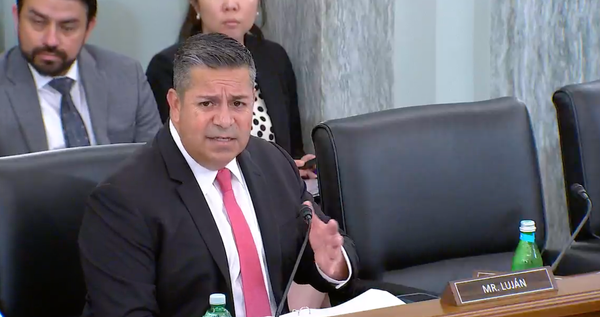At Monday's NTIA/RUS Open Meeting, A Debate About Eligibility for Funds
WASHINGTON, March 16, 2009 – The detailed-oriented open meetings to consider the structure for deploying the federal government’s $7.2 billion in broadband stimulus funds began on Monday morning with five presentations about which sorts of private-sector entities should be eligible for the grants.
News | NTIA-RUS Forum | Day 1, Session 1
WASHINGTON, March 16, 2009 – The detail-oriented open meetings to consider the structure for deploying the federal government’s $7.2 billion in broadband stimulus funds began on Monday morning with five presentations about which sorts of private-sector entities should be eligible for the grants.
Speaking at the Commerce Department’s auditorium in a joint meeting of the National Telecommunications and Information Administration and the Agriculture Department’s Rural Utilities Service, representatives of the technology industry urged the most liberal interpretation of the federal stimulus legislation’s provisions that successful applicants be deemed to be in the “public interest.”
“We think that the congressional intent is not to preclude anyone from applying,” said Grant Seiffert, president of the Telecommunications Industry Association. “I don’t think that Congress wanted to exclude anyone.”
Taking the strictest view of eligibility was Debbie Goldman, telecommunications policy director of the Communications Workers of America. Goldman said that applicants should have “the endorsement of a state or political subdivision”; shall demonstrate financial, technical, managerial and operational qualification; and that the application will “result in sustainable and quality job creation and economic development.”
Somewhere in between those poles were the positions taken by the telecommunications carriers, the states, and a spokesman for a non-profit group.
“The goals of the Broadband Technology Opportunities Program (BTOP) will be furthered if any provider of broadband service and infrastructure is eligible for a grant,” said Curt Stamp, president of the Independent Telephone and Telecommunications Alliance, but speaking for a wide variety of carrier groups.
Stamp said that providers should be eligible to apply for a grant if they have either “an FCC license, a state certificate of public convenience and necessity, a cable franchise, or similar government authorization, or otherwise provides broadband services under applicable federal, state and local laws.”
Such a standard would allow incumbent carriers to be eligible – but most pose a barrier to entry for new entrants. Under audience questioning, he said that companies without such certfication would be able to get funding, but should be scrutinized more strictly by the NTIA.
Different standards were articulated by Sasha Meinrath, director of the Open Technology Initiative of the New America Foundation, and Betty Ann Kane, chairwoman of the D.C. public service commission.
Meinrath said: “diversity and heterogeneity of business models is critically important to ensure universal, affordable broadband access.” He said that there is a divide between the dynamics of selecting on-the-ground entities that could build out broadband, and crafting a strict “public interest” rule that could end up excluding needed players.
Meinrath was critical of Goldman’s standard, saying that “predatory pricing and redlining were happening in many portions of the country,” and that new players were needed to shake up the mix of broadband providers.
Betty Ann Kane, speaking on behalf of the National Association of Regulatory Utilities Commissioners, said that the eligibility standard was met by “an entity is applying to serve otherwise unserved citizens (where unserved means no facilities-based internet access other than dial-up or satellite-based access) or the entity’s offering would improve the quality or affordability of broadband in an area.”
She also said that it should be clear that state entities should apply for the grants.









